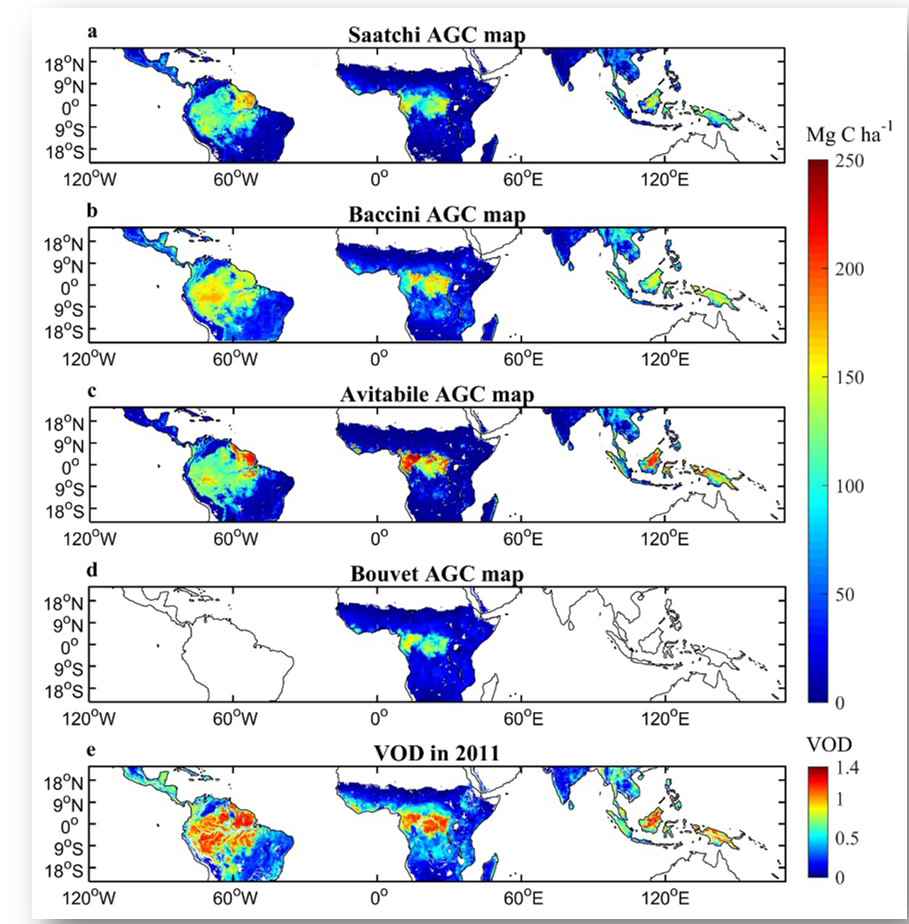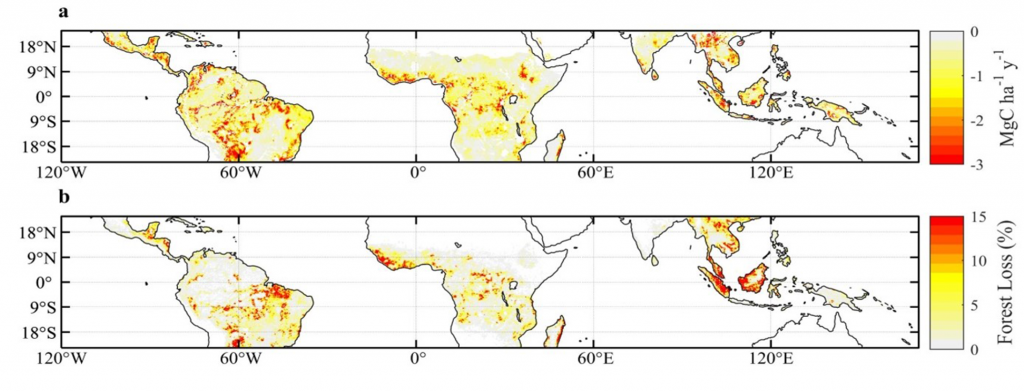Presentation
TTHEIA group of experts in Vegetation Optical Depth (VOD) measurements brings together members of the teams IPSA and Tetis working from multi-sensor microwave observations (SMOS, SMAP, AMSR2, ASCAT, Sentinel-1) to develop vegetation monitoring products.
Numerous indices make it possible to monitor vegetation (type, cover (%), vegetation cycle, leaf index or biomass) by remote sensing. Most of them are calculated from combinations of optical observations on several frequency channels (NDVI, EVI, etc.). Since the 1990s, various works have shown the relevance of microwave vegetation indices (VOD, Vegetation Optical Depth).
The VOD index measures the attenuation effects of microwave radiation by the vegetation cover: the more the vegetation cover is developed and the more it is “filled” with water, the higher the VOD increases. Linked to the water content of the vegetation (VWC, g/m2), the VOD allows monitoring in terms of seasonal or annual development, water status and biomass (on an annual scale, the average VOD is a proxy of the above-ground biomass). This monitoring is moreover independent of meteorological conditions, without the need for atmospheric corrections, nor complex radiative transfer corrections (shading effects, saturation etc.).
A Global Product Using Different Sensors
The use of the VOD index is expanding thanks to the series of passive microwave satellites observations at low resolution (AMSR-E since 2002, SMOS since 2010, SMAP since 2015) and active (with in particular in C-band: ASCAT and, very recently, Sentinel-1 which has a high spatial resolution (~10m)).
The products under development at the CES aim at a global coverage with a variable resolution depending on the sensors: 1 – 25 km for SMOS, up to the parcel scale for Sentinel-1.
VOD for SMOS
INRA-ISPA has coordinated the development of a SMOS-IC product, which allows the calculation of a new, highly accurate SMOS-VOD index that is independent of the use of auxiliary data (model-derived humidity and optical vegetation index). Theia VOD SEC is working on three developments of this product :
- (i) the improvement of the SMOS-IC VOD product by multi-orbit approaches and a priori and a posteriori filtering methods of interference impact (RFI).
- (ii) the merging of VOD products from SMOS, SMAP and AMSR-E/AMSR2. The objective is to extend the temporal depth of VOD (SMOS and SMAP), benefiting from the time series of AMSR-E/AMSR2 since 2002, and to ensure continuity if one of the sensors fails.
- (iii) disaggregation to develop products at a resolution of the order of 1 to 5 km, using physical (Merlin et al.) or Machine Learning methods, and combining multi-sensor data (SMOS, SMAP, Sentinel -1 and -2, etc.).


Maps (a) gross above-ground biomass carbon losses measured with SMOS L-VOD index (Mg C ha-1 yr-1) and (b) deforestation-related forest area losses (%) measured by Hansen et al. (Science, 2013).
VOD for Sentinel-1.
The VOD product from Sentinel-1 is currently under development at TETIS. This product is of great interest because S1 measurements are, as for SMOS, global, with a good temporal repetitiveness (several images per month), but with a resolution of about 10 m. A first inversion approach has been developed to compute a VOD product at the scale of regional sites (50 km x 50 km).
The aim will be to aim for operational production global. This ambitious objective raises both questions in terms of (calibration, validation, etc.) but also in terms of methodology (calibration, validation, etc.) but also in terms of of production infrastructure (aggregate S1 data represent several tens of TB).
Schedule
- 2019/2020: SMOS-IC VOD products, SMAP global multi-orbit VOD products
- 2019/2020: S1 VOD demonstration products on limited rights-of-way (~ 50 x 50 km)
- 2020/2021: development of an operational production chain of merged SMOS, AMSRE, SMAP products 2020/2021: S1 VOD production on a national scale.
Contacts

Jean-Pierre Wigneron
INRAE | SMOS-IC
ResearchGate
Contributions FR | EN

Nicolas Baghdadi
INRAE | Tetis
ResearchGate
Contributions

